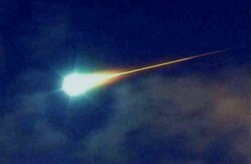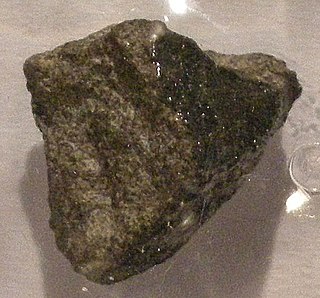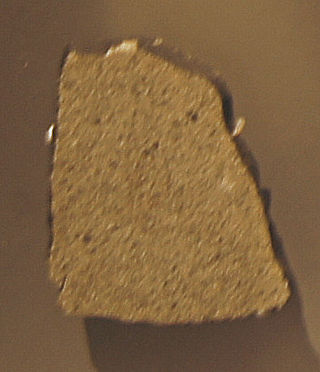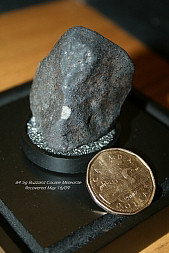
A meteorite is a rock that originated in outer space and has fallen to the surface of a planet or moon. When the original object enters the atmosphere, various factors such as friction, pressure, and chemical interactions with the atmospheric gases cause it to heat up and radiate energy. It then becomes a meteor and forms a fireball, also known as a shooting star; astronomers call the brightest examples "bolides". Once it settles on the larger body's surface, the meteor becomes a meteorite. Meteorites vary greatly in size. For geologists, a bolide is a meteorite large enough to create an impact crater.

In southeastern Russia, an iron meteorite fell on the Sikhote-Alin Mountains in 1947. Large iron meteorite falls have been witnessed, and fragments have been recovered, but never before in recorded history has a fall of this magnitude occurred. An estimated 23 tonnes of fragments survived the fiery passage through the atmosphere and reached the Earth.

The Cape York meteorite, also known as the Innaanganeq meteorite, is one of the largest known iron meteorites, classified as a medium octahedrite in chemical group IIIAB. In addition to many small fragments, at least eight large fragments with a total mass of 58 tonnes have been recovered, the largest weighing 31 tonnes. The meteorite is named after the location where the largest fragment was found: 23 miles (37 km) east of Cape York, in Savissivik, Meteorite Island, Greenland.

A meteorite fall, also called an observed fall, is a meteorite collected after its fall from outer space was observed by people or automated devices. Any other meteorite is called a "find". There are more than 1,300 documented falls listed in widely used databases, most of which have specimens in modern collections. As of February 2023, the Meteoritical Bulletin Database had 1372 confirmed falls.

Stannern meteorite fell on May 22, 1808 into the Moravian village Stonařov, in today's Czech Republic.

Gibeon is a meteorite that fell in prehistoric times in Namibia. It was named after the nearest town: Gibeon.

The Sylacauga meteorite fell on November 30, 1954, at 12:46 local time in Oak Grove, Alabama, near Sylacauga, in the United States. It is also commonly called the Hodges meteorite because a fragment of it struck Ann Elizabeth Fowler Hodges (1920–1972).

Brenham is a pallasite meteorite found near Haviland, a small town in Kiowa County, Kansas, United States. Pallasites are a type of stony–iron meteorite that when cut and polished show yellowish olivine (peridot) crystals.

Homestead is a L5 meteorite fallen in 1875 in Iowa, United States.

Norton County is an Aubrite meteorite that fell in 1948 in Kansas, United States.

Park Forest is an L5 chondrite meteorite that fell on 26 March 2003 in Illinois, United States.

Gao–Guenie is a H5 ordinary chondrite meteorite that fell on Burkina Faso, West Africa, on March 5, 1960. The fall was composed of many fragments and it is one of the largest observed meteorite showers in Africa to date.

Buzzard Coulee is the collective name of the meteorites fallen on November 20, 2008 over Saskatchewan, Canada.

Chergach is a meteorite found at southwest of El Mokhtar, Erg Chech, Timbuktu district, Mali. It fell on 2 or 3 July 2007, in daytime, and was composed of ordinary chondrite (H5).
Akbarpur is an H chondrite meteorite that fell to earth on April 18, 1838, in Uttar Pradesh, India. It is notable for being the first Indian meteorite for which an official report accompanied by a legal deposition was filed.
Chambord is an iron meteorite found in Quebec.
St-Robert is an ordinary chondrite meteorite fell on Quebec on June 14, 1994.
Lac Dodon is an iron meteorite discovered by Roland Octerneau of Montreal on rural private property near Lac Dodon, Saint-Calixte, Quebec.

The Weston meteorite is an H4 ordinary chondrite meteorite which fell to earth above the town of Weston, Connecticut on the morning of December 14, 1807.
Annaheim is an iron meteorite recovered in 1916 in Canada.















